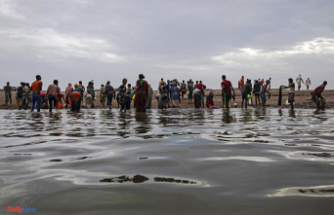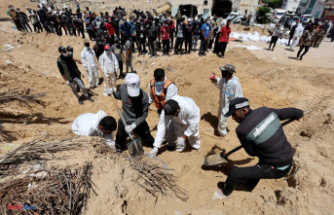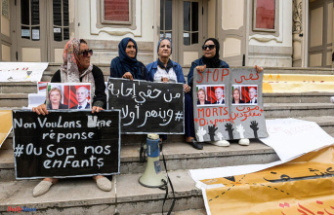the Whole world knows something of history about the old Egypt , Mesopotamia or the civilization china : we are studying in the school, books have been written and even filmed movies and series -more or less reliable and accurate - set in these societies. However, few know that there was a settlement that rivalled in importance with all these cultures of the time and that, despite his forgetfulness, was the most extensive of all the ancient settlements. This is the Indus Valley civilization , which now re-emerge thanks to the magic of DNA.
he Survived several millennia (the experts dating its life in the Bronze Age, the between the 3,300 and the 1,300 to. C ), used agriculture , livestock , the metallurgical and pottery , and covered territory of more than one million square kilometers around the river that gives it its name, but few are the traces which remain to this day. The most important remains found in the ancient cities of Mohenjo-Daro , in Pakistan, and Rakhigarhi , close to New Delhi, although the settlements were dispossessed during the NINETEENTH and TWENTIETH centuries. The looters, along with the warm weather and fluctuating in the area, with floods of the Indus, has become the perfect mix that has led to the degradation and the forgetting of the call civilization Harappa .
"The culture Harappa was one of the first civilizations of the ancient world and an important source of culture and indian traditions, and, however, it has been a mystery how it left so much mark in later cultures and how they interacted with their contemporaries ," says the archaeologist Vasant Shinde , of the Deecan College (India). He stood by the geneticist David Reich , Harvard University, and an international team have just unravel the genome of the first citizen known of the Indus Valley, a research that has just been published in "Cell" and that sheds light on this unknown people.
daunting Task
The task was not simple: the human remains were so badly degraded by the conditions of the area to find a small sample of viable DNA "has been a challenge," says Reich. After collection of 61 samples of the old city of Rakhigarhi and 100 attempts , the lab finally found a small sample viable from a woman who lived for four or five millennia in the lost civilization. In addition, the attempts were not in vain: "Although every one of the attempts did not produce enough DNA, your group turned out to be very helpful to learn about the history of the population," says the researcher.
once obtained these data, were crossed with those obtained in another study that has just been published in "Science" and which is the more comprehensive analysis of ancient DNA from central Asia and the south brought up to date. Among the more than 500 individuals analyzed by the research of "Science", so only once lived in what is now Iran and Turkmenistan concidían with the wife of Rakhigarhi. The researchers believe that it could be emigrants from this culture.
A trail unique geneticBefore the study, there were many theories about the genetic origins of the inhabitants of the Indus Valley. "Could resemble the hunter-gatherers of southeast asia, or to the iranians; they could even be related with the pastors steppe. All were plausible before the ancient discoveries of DNA," says Reich. In the end the genetic footprint showed that it is a unique blend between the first two possibilities: ancestry related to the hunter-gatherers of the southeast asia and ancient iranian.
it Is a trail gene which is also present in the south asian modern, what leads you to think the researchers that the people of the culture of the Indus Valley are your ancestors more and more common. "This finding links to the people in south Asia today directly with the Indus Valley civilization ," says Reich. Although the visible traces of this culture have been lost in time, their mark is in the genes of their descendants.
The mystery of agricultureThe findings also offer a striking vision of how agriculture came to south Asia . A dominant vision in archaeology has been that the people of the Crescent Fertile of Middle East , home of the first evidence of agriculture, spread across the plateau of iran and from there to the south of Asia, bringing revolutionary practice. Genetic studies to date seemed to add weight to this theory by showing that the descent related to Iran was the highest contributor to the ancestry in south asians.
But this new study shows that the lineage of ancestry related to Iran in the modern south asian seceded from the ancient farmers, pastoralists and hunter-gatherers iranians before the invention of agriculture in the Fertile crescent Moon. Therefore, the agriculture was reinvented locally in the south Asia or was reached through the cultural transmission of ideas instead of through movement substantial farmers iranians in the west.
But all these data are only the beginning: "The culture Harappa built by an ancient civilization, complex, and cosmopolitan, and certainly there was a variation that we can not detect by analyzing a single individual (...) But the ideas that emerge from this ancient person demonstrate the tremendous promise of ancient DNA studies of south Asia and its potential to transform our understanding of the deep history of the subcontinent," explains Shinde. That is to say: the ancient DNA still holds the key.
Date Of Update: 12 September 2019, 14:00











